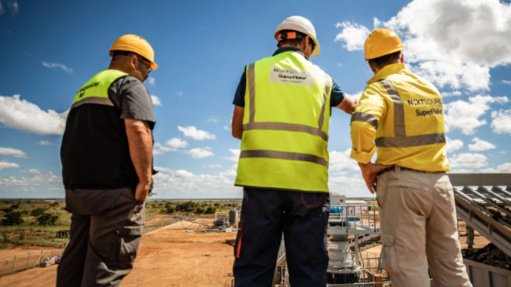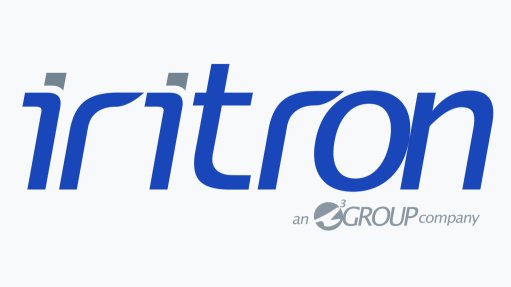HR issues put mining sector competitiveness at risk
Without exception the mining sector the world over must deal with the ‘people factor’. In this regard Canada is no different, with human resources (HR) challenges one of the largest threats to the future competitiveness of its mining industry.
The Mining Industry Human Resources Council (MiHR) is the national HR council for Canada’s minerals and metals industry and its most recent labour market report reveals that the industry will need to hire 112 000 workers by 2021 in order to meet the needs of the sector.
MiHR executive director Ryan Montpellier tells Mining Weekly that it is becoming more difficult to find experienced and skilled workers and the mining industry is faced with increased competition for talent from other sectors and an inefficient labour market that stems from barriers to worker mobility.
“It is important that the mining industry continues to diversify the labour pool by making better use of all sources of labour, such as women, new Canadians and Aboriginal peoples,” says Montpellier. He adds that attracting more young people to the industry and developing programmes to help retain mature and/or retiring workers will help to mitigate the effects of the skills shortage.
“This skills shortage will continue to lead to increased labour costs, as the race to secure talent continues. The skills shortage warning has started to lose its effect, as companies have been hearing the same message for years, but the fact remains that we need to act now before we find ourselves facing an uptick in the market with no workers to sustain it,” states Montpellier. “In fact, in 2012 we have already seen several large potential mining projects delayed or outright cancelled owing to rising costs.”
Since its inception in 1996, MiHR has convened industry, including mining employers, organised labour, educational institutions and Aboriginal communities, to develop stakeholder-led HR programmes that focus on the sustainability of the mining industry.
Montpellier explains that, as seen in other sectors across Canada’s economy, with the workforce aging, combined with industry growth due to increased international demand for Canadian commodities from countries such as China and India, the mining industry faces a skills shortage.
“As the baby boom generation begins to reach retirement age over the next decade, Canada is expected to reach a point where there will be more people able to leave the labour force than entering it and the urgency for the mining sector is greater than for many other sectors,” he warns.
This effect may, in fact, be more pronounced in the mining sector. “Over the last 20 years, the average age of retirement in the Canadian mining industry has been 59.5, which is younger than the average of 62 across the entire economy. Thus, the mining industry may face the retirement pressures sooner than other industries.”
MiHR’s latest research indicates that almost 40% of the employees in the mining industry are over 50 years old, meaning that in the next decade, the industry will be losing more than 67 000 people to retirement. In the next five years alone, one-third of the industry will be eligible to retire.
Montpellier states that although the mining industry offers many rewarding and challenging careers and is one of Canada’s highest-paid sectors, known for its commitment to safety and exciting opportunities for professional development and travel, it remains difficult to retain talent within the industry.
“Unfortunately the rural and remote location of many mining and exploration sites makes retention for the industry a challenge. Also, the shift work and in many cases the fly-in/fly-out schedules can be challenging for people who are also trying to balance work and family life,” says Montpellier.
He explains that competition for skilled workers is being felt on a number of levels.
First, within the industry itself, companies are competing for a larger portion of a shrinking labour pool.
Mining also faces competition from other industrial sectors in Canada such as oil and gas, construction and forestry.
Finally, the Canadian mining industry faces international competition. As Montpellier puts it: “Mining is a global business and top talent will often migrate to the location of the orebodies”.
He reports that companies are imple-menting a number of programmes to try and retain their top talent, adding that retention goes beyond competitive salaries and includes factors such as learning/career development opportunities, international work opportunities and flexible work environments. Many firms are also exploring dual-career paths as another retention strategy.
“The primary goal of this type of development approach is to enable greater advancement possibilities for highly skilled technical employees who might otherwise plateau too early within their area of specialty,” says Montpellier.
Skills shortages are being felt across all occupational groups, but Montpellier reports they are significantly greater for trades and undesignated occupations.
“Addressing skills shortages for specific occupational groups requires a coordinated effort between industry and education and there are several initiatives being led by a number of organisations to address these challenges directly.”
MiHR has developed and is implementing several targeted programmes to tackle the issue.
Montpellier explains that ‘Explore for More’ is the council’s career attraction brand that provides a myriad of information and resources about the mining industry. The brand is readily adaptable to provincial and regional needs.
The Virtual MineMentor Program is one facet of the ‘Explore for More’ brand and is a popular programme that pairs enthusiastic industry professionals with postsecondary students or mining career seekers in mining- related programmes. The programme promotes the development of industry connections and knowledge sharing and helps career seekers navigate the industry.
As Canada’s first and only national mining certification programme, the Canadian Mining Certification Program (CMCP) certifies workers in undesignated occupations such as underground miner, minerals processing operator, surface miner or diamond driller, against a national occupational standard. The programme will help to establish standardised skills in mining across the country and also enhance worker mobility across provincial borders.
Mining Essentials is an employment training programme for Aboriginal peoples who are interested in exploring their career options in mining. It teaches both the essential skills and work readiness skills that the mining industry requires to be considered for an entry-level position. This programme was created to help companies and communities meet joint hiring and employment targets.
Montpellier explains that, as outlined in MiHR’s 2011 Canadian Mining Industry Employment and Hiring Requirements report, the mineral exploration and mining industry is the number one private sector employer of Aboriginal (First Nations, Métis and Inuit) peoples in Canada. Nearly 8% of the industry’s labour force self-identifies as Aboriginal, a proportion that is far above the rate of participation in the rest of the Canadian labour market, at about 4%.
“However, the majority of Aboriginal peoples employed in the industry are engaged in entry level or labour-related occupations. The sector underperforms the rest of the labour market in inclusion of Aboriginal peoples in knowledge-worker roles, defined as highly skilled individuals with college and university educations.
“Aboriginal peoples are a key source of talent for exploration and mining employers as they face skills shortages in the near future. The majority of mining activities occur in close proximity to Aboriginal communities and the industry is a major employer of Aboriginal peoples. Also, almost half of Aboriginal people are under 25 years old and can step in to help fill this gap,” says Montpellier.
He believes that raising awareness of the HR issues and mobilising industry to work collaboratively to address the challenges are two of the council’s most significant achievements.
“A specific example that demonstrates this collaborative effort is the CMCP, with more than 100 stakeholders across the country involved in the design, development, validation and implementation of the certification programme.
“Today, the programme continues to gain momentum with nearly 500 people certified and several thousand others to be certified in years to come as more and more mining companies and contractors implement the programme.”
He adds that 2013 is a year of transition for MiHR as it develops a new governance model and strategic plan that will further enhance its ability to bring industry together to address the skills shortage.
“Our vision is to ensure that the Canadian mining sector has an appropriately sized, skilled and adaptable workforce to meet the evolving needs of the sector. MiHR continues to evolve and adapt to meet the needs of the Canadian mining sector,” says Montpellier.
At this year’s PDAC event MiHR will be presenting information on its Mining Essentials Aboriginal engagement programmes during the session on Aboriginal peoples and the mining industry.
Article Enquiry
Email Article
Save Article
Feedback
To advertise email advertising@creamermedia.co.za or click here
Press Office
Announcements
What's On
Subscribe to improve your user experience...
Option 1 (equivalent of R125 a month):
Receive a weekly copy of Creamer Media's Engineering News & Mining Weekly magazine
(print copy for those in South Africa and e-magazine for those outside of South Africa)
Receive daily email newsletters
Access to full search results
Access archive of magazine back copies
Access to Projects in Progress
Access to ONE Research Report of your choice in PDF format
Option 2 (equivalent of R375 a month):
All benefits from Option 1
PLUS
Access to Creamer Media's Research Channel Africa for ALL Research Reports, in PDF format, on various industrial and mining sectors
including Electricity; Water; Energy Transition; Hydrogen; Roads, Rail and Ports; Coal; Gold; Platinum; Battery Metals; etc.
Already a subscriber?
Forgotten your password?
Receive weekly copy of Creamer Media's Engineering News & Mining Weekly magazine (print copy for those in South Africa and e-magazine for those outside of South Africa)
➕
Recieve daily email newsletters
➕
Access to full search results
➕
Access archive of magazine back copies
➕
Access to Projects in Progress
➕
Access to ONE Research Report of your choice in PDF format
RESEARCH CHANNEL AFRICA
R4500 (equivalent of R375 a month)
SUBSCRIBEAll benefits from Option 1
➕
Access to Creamer Media's Research Channel Africa for ALL Research Reports on various industrial and mining sectors, in PDF format, including on:
Electricity
➕
Water
➕
Energy Transition
➕
Hydrogen
➕
Roads, Rail and Ports
➕
Coal
➕
Gold
➕
Platinum
➕
Battery Metals
➕
etc.
Receive all benefits from Option 1 or Option 2 delivered to numerous people at your company
➕
Multiple User names and Passwords for simultaneous log-ins
➕
Intranet integration access to all in your organisation
















